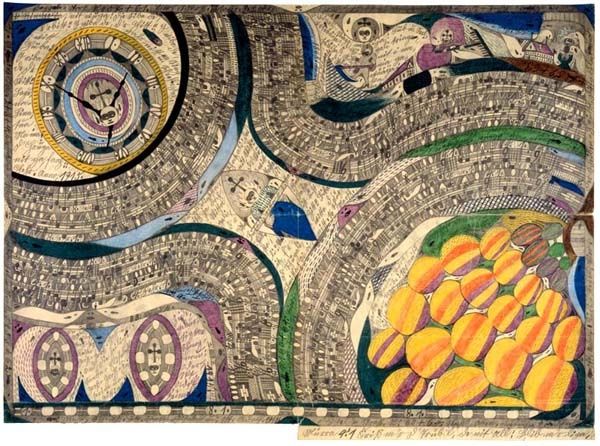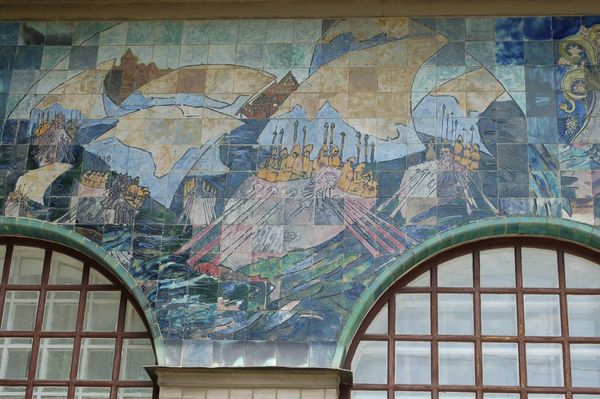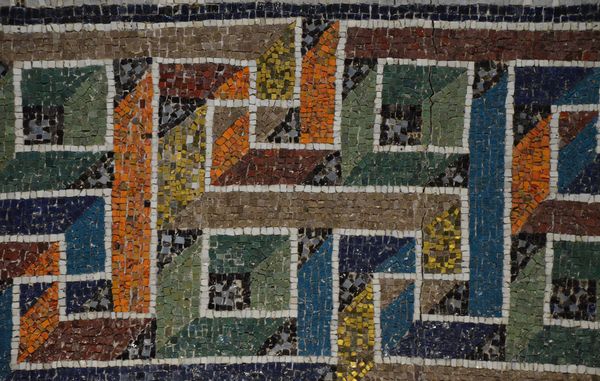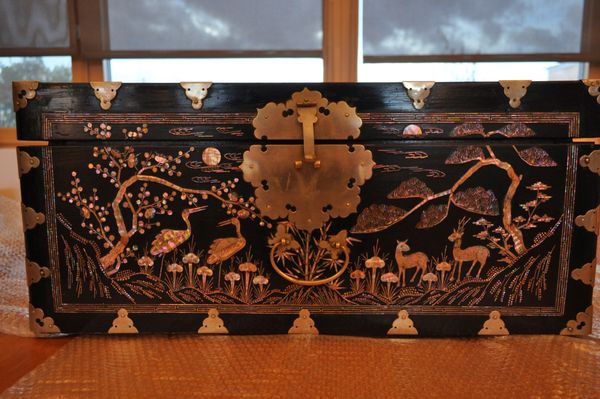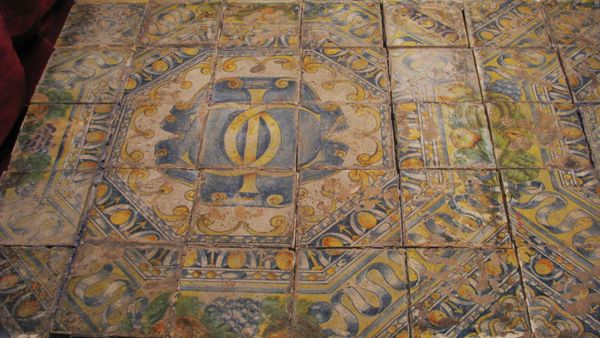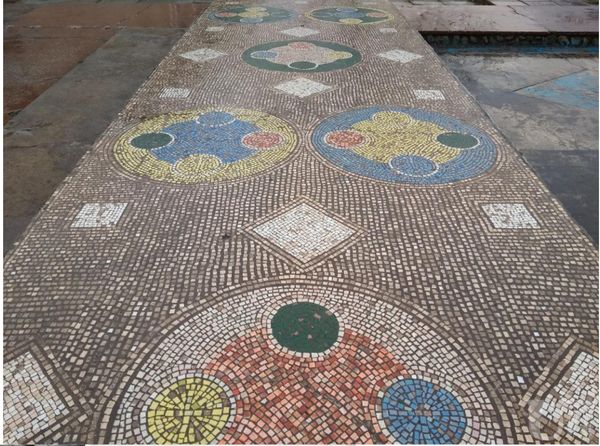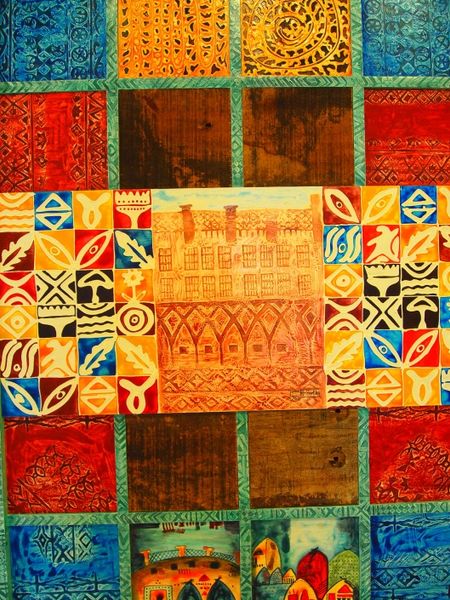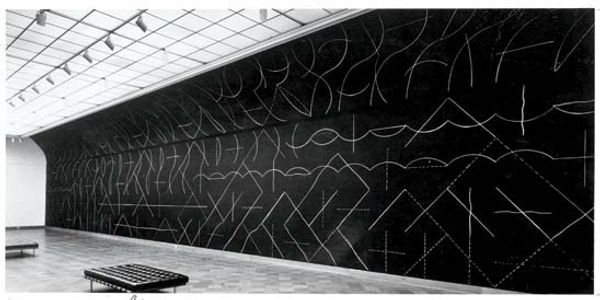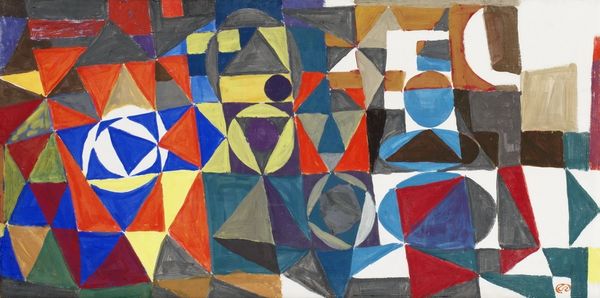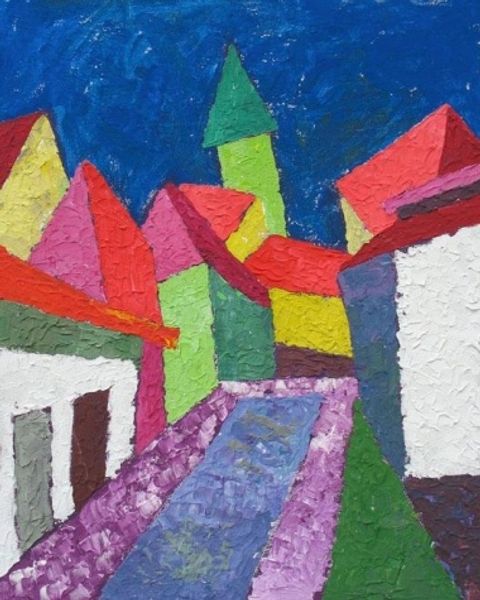
Panel 'Earth. Cosmos' in the Interior of the Palace of Culture 'Iskra' of the Zhdaniv Heavy Machinery Plant Now 'Azovmash', Mariupol 1968
0:00
0:00
mosaic, mixed-media, mural
#
mosaic
#
natural stone pattern
#
mixed-media
#
abstract painting
#
soviet-nonconformist-art
#
mural art
#
tile art
#
geometric
#
abstraction
#
abstract composition
#
mural
#
mixed media
#
decorative art
Copyright: Valerii Lamakh,Fair Use
Curator: Look at this impressive mosaic panel. This is “Earth. Cosmos,” created in 1968 by Valerii Lamakh for the Iskra Palace of Culture, now part of the Azovmash plant in Mariupol. The work uses a mixed-media approach, primarily mosaic tiles. Editor: My immediate impression is how fragmented the images seem. The distinct tile work creates this stunning abstract quality—a mosaic of the cosmos, really. I find its visual language captivating, yet I find it also a challenge to see any immediate representational objects or subjects here. Curator: The tiles themselves offer a critical clue. Consider their availability and origin. Mass-produced during the Soviet era for public spaces, their standardization reflects the collectivist ideology underpinning projects like this Palace of Culture, intended for the workers of the Zhdaniv Heavy Machinery Plant. Editor: Yes, I see. The geometry is very pronounced. Notice the circular and rectilinear forms: one almost senses them competing with the jagged, broken tile edges, disrupting pure geometry with pure materiality. This friction brings life to an otherwise static arrangement of basic shapes and celestial forms. Curator: Absolutely. Lamakh’s commission speaks to the larger network of artists employed to create these works of public art during this time. This artistic endeavor was a collaboration—between the artist, the factory, the cultural administration, and the mosaicists implementing the design, it shows the industrialization of artistic labor and reflects an intricate web of production and consumption. Editor: Do you believe the piece carries much symbolism, given its abstract forms? Curator: Yes. The very title of the artwork connects both earth and cosmos. The depiction of the cosmonaut suggests Soviet advancements in space exploration, while the terrestrial components ground the work within a tangible reality. Even in its fragmentation, the work reflects a hopeful, yet controlled, vision of progress, deeply rooted in the worker's everyday life. Editor: Well, now I am also seeing the mosaic not just as a play of fragmented geometries but as a layered interplay of national ambition, technological drive, and, finally, of labor and industry as essential means for creating any kind of artistic expression. It is such an important work to appreciate. Curator: Indeed. Thinking through its means of production makes me contemplate how public spaces in Soviet-era Mariupol were designed for the very public it sought to serve.
Comments
No comments
Be the first to comment and join the conversation on the ultimate creative platform.

